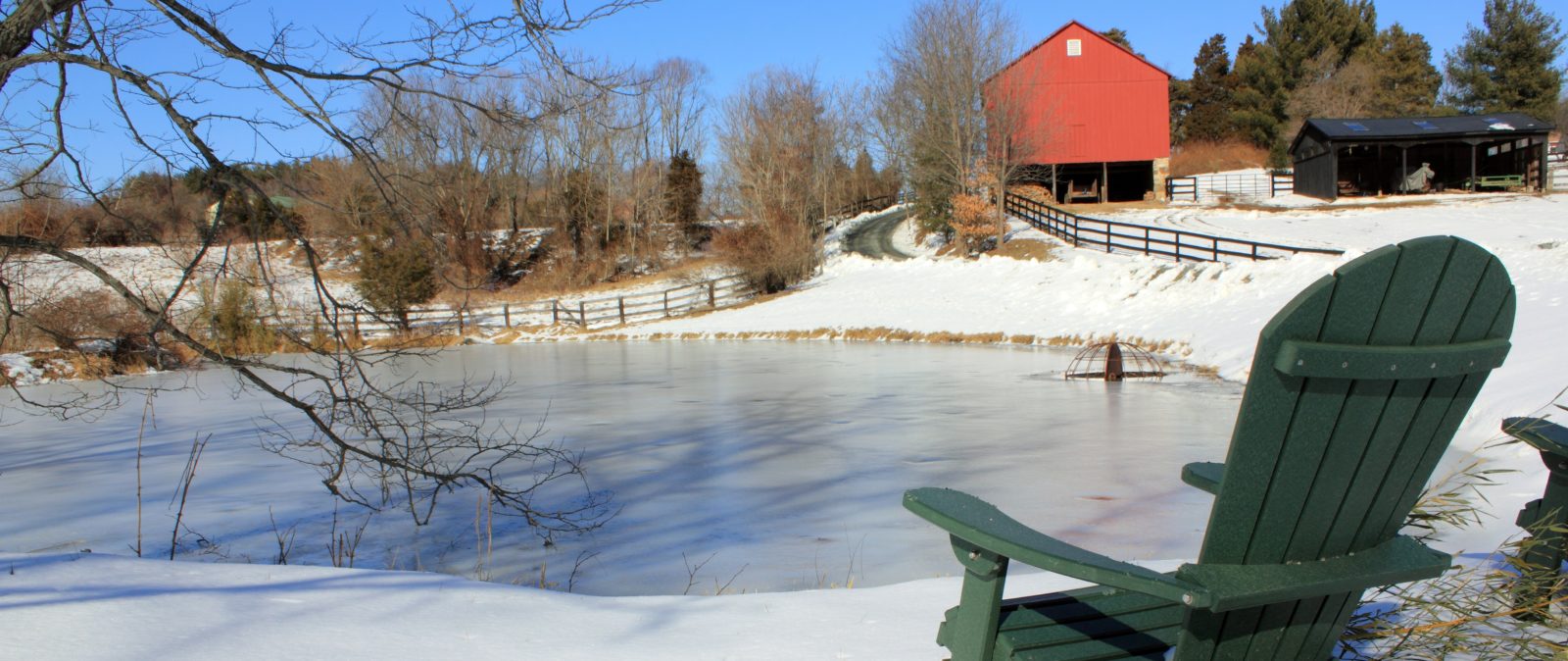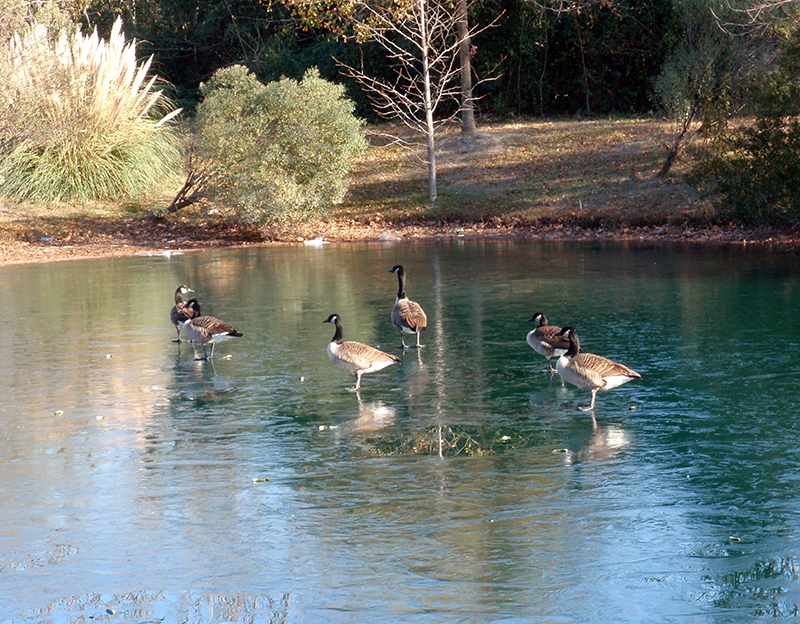
Thin Ice: Beware of Ice Covered Lakes and Stormwater Ponds
AS SEEN IN Consensus, Central Virginia Chapter, Community Associations Institute: Written by Matthew Phillips, Aquatic Biologist and Environmental Scientist
 I remember a few years ago when I first stepped foot onto a frozen lake. Having lived my entire life in the south, a frozen body of water may as well have been a mythological creature, but there I found myself, on the edge of an 11 square mile frozen lake. My friends all assured me that it was OK as they effortlessly walked across the ice but I was still cautious, even as I gazed into the distance and saw cars driving on the ice. I finally did proceed one baby step at a time, followed by a complete wipeout, much to the enjoyment of my friends. As the winter and following years progressed, I became quite accustomed to not only walking on the ice, but also driving my truck out on it. It would take some time, but I was able to “read” the ice and determine when it was safe to walk on.
I remember a few years ago when I first stepped foot onto a frozen lake. Having lived my entire life in the south, a frozen body of water may as well have been a mythological creature, but there I found myself, on the edge of an 11 square mile frozen lake. My friends all assured me that it was OK as they effortlessly walked across the ice but I was still cautious, even as I gazed into the distance and saw cars driving on the ice. I finally did proceed one baby step at a time, followed by a complete wipeout, much to the enjoyment of my friends. As the winter and following years progressed, I became quite accustomed to not only walking on the ice, but also driving my truck out on it. It would take some time, but I was able to “read” the ice and determine when it was safe to walk on.
That all took place in Northern Minnesota where learning to walk on ice comes right after learning to walk and right before learning to ride a bike. While in Minnesota, I was taught the various thicknesses of ice and what it could and could not support. I was also taught to look at the color, shape of the cracks, know the depth of the water underneath the ice, previous week’s weather temperatures and precipitation, animal activity, and water current and flow underneath the ice. All of these factors and many more determine the overall thickness of ice and how safe or unsafe it might be. As you can imagine, ice changes constantly. What might have been safe to walk on one day is unsafe the next or just because it is safe on one lake, doesn’t mean that it is safe on all lakes. Here in the Eastern United States, things are very different when it comes to ice on ponds.
In most of the mid-Atlantic it is safe to assume that all ice on ponds is unsafe for the simple fact that it does not get cold enough or stay cold enough for sufficient ice to form. Other factors can lead to bad ice. Most of the ponds here are for stormwater retention purposes and are very susceptible to heavy flows. While there might be ice on a pond, a little bit of rain or even snow can weaken that ice. The runoff also will contain salts and sand from the road treatments that will weaken the ice once it is in your pond. Also, many ponds have fountains or submerged aeration systems in them which cause movement along the surface of the water. This can cause weakened or very thin ice. However, as mentioned, it does not get cold or stay cold long enough in Virginia for safe ice to form.
Be safe in the cold weather and remember to stay off the ice on stormwater ponds no matter how thick you think it is. There can be several hidden weak areas that will instantly break sending you down. I should know, while in Minnesota, I foolishly walked too close to a muskrat house and in an instant, down I went. I was extremely fortunate that I was only in waist deep water and we were near my truck so I was able to warm up, but it was an experience I never want to repeat or see happen to anybody else.
Contact the experts at 888-480-5253 for all of your lake, pond and fisheries management needs.
Matthew Phillips is an Aquatic Biologist and Environmental Scientist with SOLitude Lake Management.Since 1998, SOLitude Lake Management has been committed to providing full service lake and pond management services that improve water quality, preserve natural resources, and reduce our environmental footprint. Services are available throughout the Eastern United States. Fisheries management consulting and aquatic products are available nationwide. Learn more about SOLitude Lake Management and purchase products at www.solitudelakemanagement.com.









